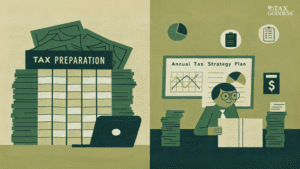Living in California? Let’s talk about California mile tax
The electric vehicle revolution is upon us! Across the country, drivers are ditching gas stations and embracing the quiet hum and green benefits of EVs. But with this exciting shift comes a challenge: How do we fund road maintenance when gas tax revenue, a traditional source of funding, starts to dry up?
As more Californians switch to electric cars, revenue from gas taxes drops. It is estimated that the rise of EV vehicles could dig a $4.4 billion hole into the state’s budget over the next decade. How do we deal with this loss when about 80% of road repair work is funded by gas tax revenue?
What Is California Mile Tax?
California is considering a new mile tax system, a potential solution to the decreasing revenue from the gas tax. This system is based on miles driven rather than fuel consumed and is a response to the growing number of electric vehicles. To address the gap and provide what the state believes is a fairer California mile tax system, the Pilot Program has been set up. If successful, this could bring about a more sustainable and equitable way of funding road maintenance in the state.
How Does The Pilot Program Work?
The California pilot program, set to launch in August 2024, is basically a six-month program for a volunteer pool of drivers to test the system and provide valuable data about the proposed change. The aim is to shape if and how the California maile tax is implemented. If you are worried about how this new road charge will work, here are some key points you should know.
- Eligibility: Participation is voluntary, and interested drivers can apply to join the program.
- Mileage Tracking: Drivers have options for tracking their miles. This includes using a transponder placed in their cars, installing a tracking device, using their vehicle’s built-in tracking system, or submitting their odometer readings manually.
- Rates: The program is testing different mileage rates, with options ranging from about 3 cents per mile, depending on the car you drive. These rates are proposed to be “revenue-neutral,” meaning they should generate roughly the same amount of revenue as the current gas tax.
- Gas fee: If you choose to participate in the pilot program, you will receive up to $400, and your gas tax fee will be waived. Testers will receive $100 at the start of the pilot program, an additional $200 if they pay all their mileage fees over the six months, and another $100 at the end.
If you are interested in participating in the pilot program, you can sign up on the California Road Charge website
How Will the California Mile Tax Affect Me?
The proposed mile tax system could have a number of impacts on individual drivers depending on several factors, including:
- Driving Habits: Highway commuters racking up high mileage could see a significant cost increase compared to the gas tax. However, city drivers with lower mileage might see lesser change or even a decrease in their road tax burden.
- Vehicle Type: Electric Vehicle drivers currently paying very little in gas tax would likely see an increase in their road tax liability under the proposed mileage-based system.
- National Implications: if successful, California’s experiment could serve as a model for other states battling with decreased gas tax revenue and provide alternative road funding solutions.
Without a doubt, the California mile tax is a bold experiment with possibilities to reshape road maintenance payment in the electric vehicle era. While there are concerns to address, the program offers a glimpse into a future where road funding seems fairer and more efficient. As the pilot program progresses, it will be interesting to see how California handles this potential road to a more sustainable transportation future.
Got more questions about the California mile tax? Send it our way here and we’ll be happy to answer you
What are your thoughts on the California mile tax? Share your comments below, and let’s discuss the future of road funding!







